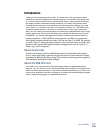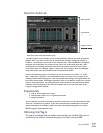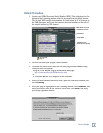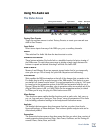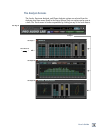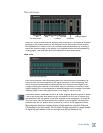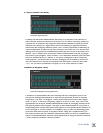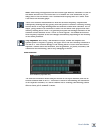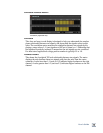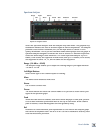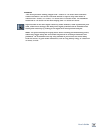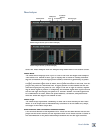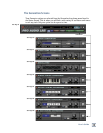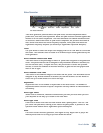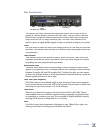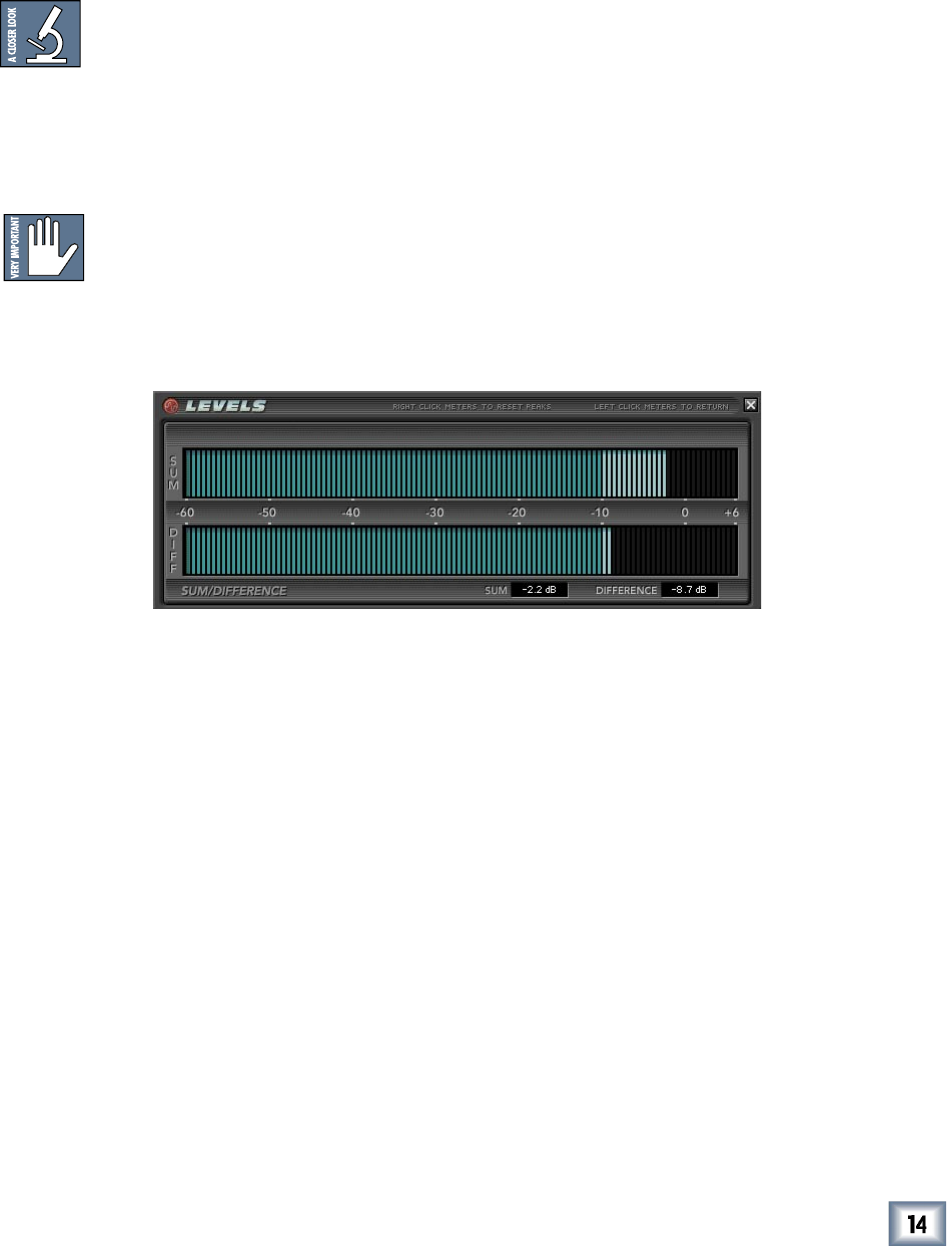
User’s Guide
Note:
When using this application on the left and right masters, remember to turn off
the enable button in the Pro Audio Lab GUI to disable the Tone Generation, as you
simply need to see the meters. The Loudness Meter displays both a VU and a Peak
Level meter on the same graph.
There is no absolute measurement for how the ear hears frequency response and
consequently hearing can vary greatly from one person to another. Generally, hearing
is much better in the high-midrange and less sensitive toward both extremes. For ex-
ample, young children can often hear to above 20 kHz while older people often have
dif culty hearing above 5 kHz. It is generally accepted that average resonance in the
eardrum is most sensitive in the 2.5 kHz to 4 kHz regions. The human ear does not
hear frequency response as at and changes substantially depending on the intensity
of the sound presented.
Very Important:
With every 3 dB increase in output, double the ampli er and
speaker power is required. Typically, the upper end of the ear’s intensity threshold is
140 dB SPL. This is where damage to the hearing starts to occur even with limited
exposure. Sounds above this threshold, such as gunshots, jet planes, machines, and
continuous loud monitoring, can be very damaging to the ear.
Sum/Difference
Sum/ Difference (expanded view)
The Sum and Difference meters analyze the sum of two input channels, and the dif-
ference between them in dB VU. This meter is useful in determining the association
of two separate channels, or a stereo channel that is creating comb ltering caused
when a stereo pair is summed to mono.



